‘Not enough beds’ A look at the farmworker housing crisis in eastern Washington
Each morning at 5 a.m., Marcos Gonzalez Rios and Rogaciano Sonchez Tapia board a van with other H-2A farmworkers and take a one hour ride to an apple orchard in Royal City. They arrived from Mexico to work in eastern Washington at the end of February this year.
They both live at Ringold, a farmworker housing property in Mesa owned by Wafla, formerly the Washington Farm Labor Association. From Kennewick, it’s about a 40-minute drive through fields, farms and ranches.
Washington’s robust agriculture industry is centered in and around Yakima and the Tri-Cities. That industry depends on H-2A guest workers and domestic workers to tend to orchards and fields, and harvest the fresh fruit and vegetables that fill American grocery stores and local markets.
In Franklin County, the average number of people employed in agriculture in 2022 was 5,692 farmworkers. For those farmworkers, it can be a challenge to find quality, affordable housing in the Tri-Cities area.
It’s a crisis that could cost Tri-Cities area farmers and organizations millions to address.
The gap in farmworker housing has serious implications for the future of Washington’s farming industry and its workers.
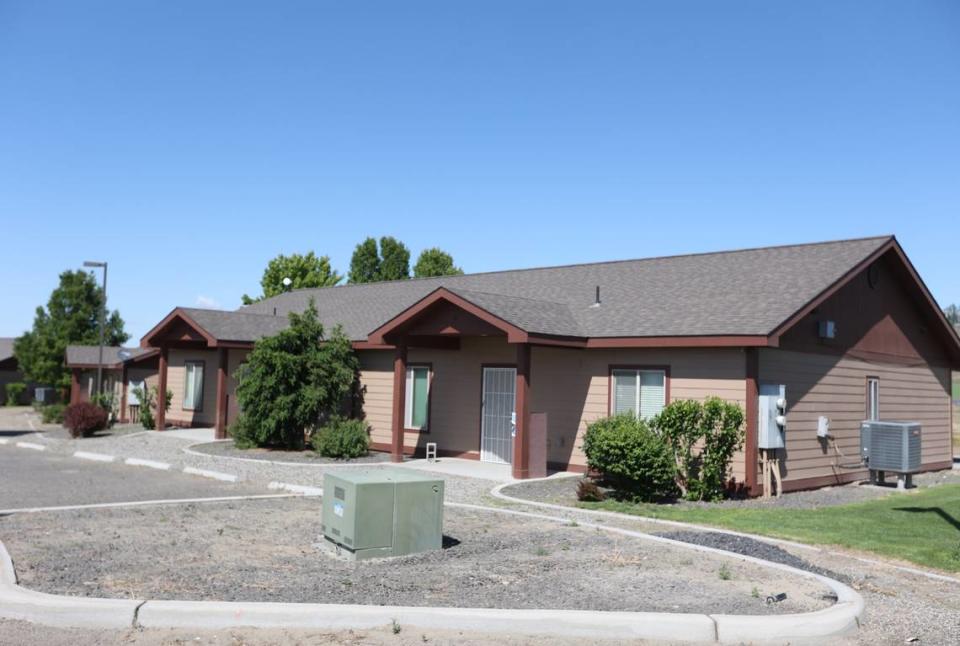
Even while the number of H-2A workers in Washington is trending lower than before and as domestic workers are disappearing, housing still isn’t meeting demand.
There are only three licensed off-farm farmworker housing options in Pasco: La Posada East and West on Lewis Street, operated by Sea Mar Community Health Center, and the Housing Authority of Franklin County and Pasco’s Varney Court with 38 two-, three- and four-bedroom apartments. La Posada East has 36 rooms and there are 32 rooms at La Posada West, including 12 family units.
Farmworker housing may be up to 40 miles away from farms, so farmworkers living in Tri-Cities may be traveling north and east to other agricultural hubs, like Royal City, Othello and Wallula.
The next closest off-farm farmworker housing is Ringold — with 132 beds for H-2A workers. Each small brown house has three bedrooms with twin size bunk beds for 11 workers. Wafla must allocate eight to ten beds of the 132 available for domestic migrant workers who may arrive at any time during the season and can stay for $20 per day.
Wafla also leases Bella Vista Estates which opened in Benton City in 2023, a neighborhood of single-family homes that is licensed as farmworker housing.
H-2A Housing Requirements
Washington farmers are turning now more than ever to the H-2A system to bring in guest workers. H-2A employers are required to provide housing for their H-2A workers — either on-farm housing owned by the farm and located on site, or off-farm housing, which they rent out for workers — and must document the housing before hiring.
Costs accrued by H-2A employers add up quickly. Housing and transportation for H-2A workers is completely paid for by farmers. H-2A employers are required to provide free housing to contracted domestic workers if they request it.
Each fall, Wafla collects bed requests for H-2A workers from farmers for contract filing. The state’s largest H-2A employment agency, Wafla partners with recruiters in Mexico to fill H-2A positions at Washington’s farms and ranches, as well as some farms in Oregon and Idaho.

Ringold’s live-in manager Jose Avila said that two of Ringold’s units are reserved this year by Washington Orchards. The orchard’s staff comes to Ringold before the workers arrive to stock the units with groceries, kitchen and bath essentials, and make the beds with clean sheets and blankets.
Once the workers arrive, employers must also take workers to cash their checks, go to the grocery store and do other errands weekly. They handle health emergencies too.
Enrique Gastelum, Wafla’s CEO, said that Ringold and Bella Vista are full five months out of the year from the end of May to the end of October — what’s considered peak agricultural seasonal labor time — when H-2A workers are in the Tri-Cities area. H-2A workers will travel back to their country of origin in November.
“In any given year, once we get those five months filled, we still have a few hundred H-2A workers needing beds in the Tri-Cities area during those months,” Gastelum said.
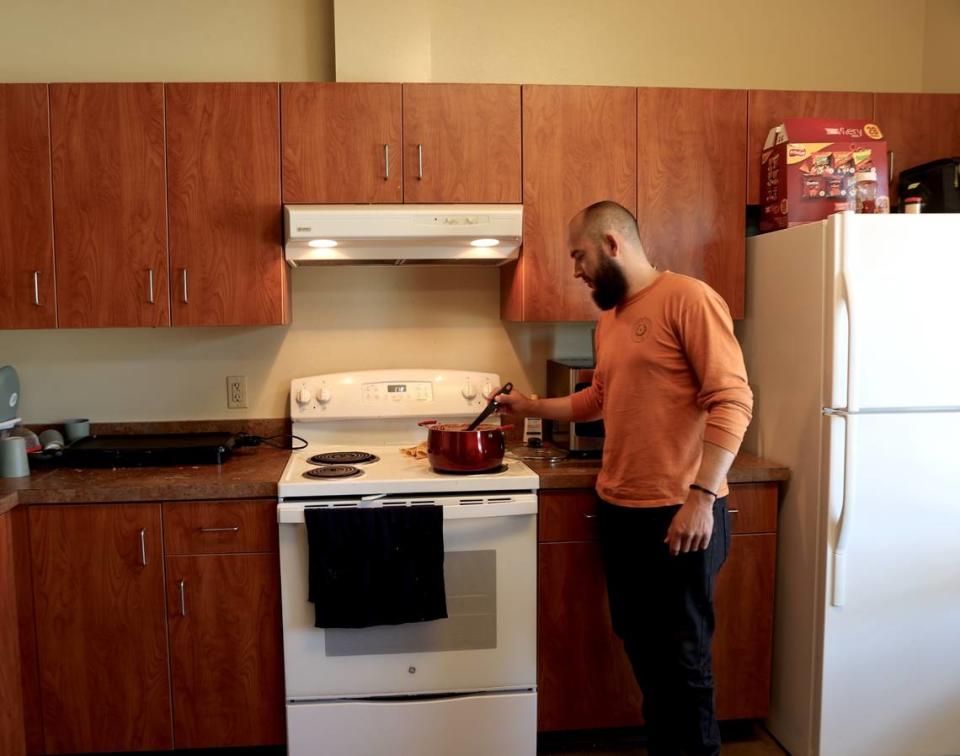
Who are Washington’s farmworkers?
The groups of people who need farmworker housing in Washington are H-2A workers, mostly from Mexico, domestic workers who are year-round residents, and domestic migrant workers who travel within Washington and state-to-state, sometimes from California to Oregon to Washington, or starting in Texas.
Marty Miller is the executive director of the Office of Rural and Farmworker Housing (ORFH), based in Yakima. The private nonprofit organization works throughout the state to provide development services — from land acquisition and financing to construction management — to create affordable housing, including farmworker housing.
“Domestic migrant workers have the most difficult time finding housing,” Miller said.
Miller said that’s because other groups can find a place to live for a longer period. He gave an example of the challenge of finding housing for a migrant worker traveling from Pasco to Okanogan County to pick apples for one month.
Miller noted that there has been progress in Washington with seasonal and year-round housing being created and offered by farmers.
“Over the years, there’s been a recognition that housing is an important element to recruit and retain a workforce in the agriculture industry,” Miller said.
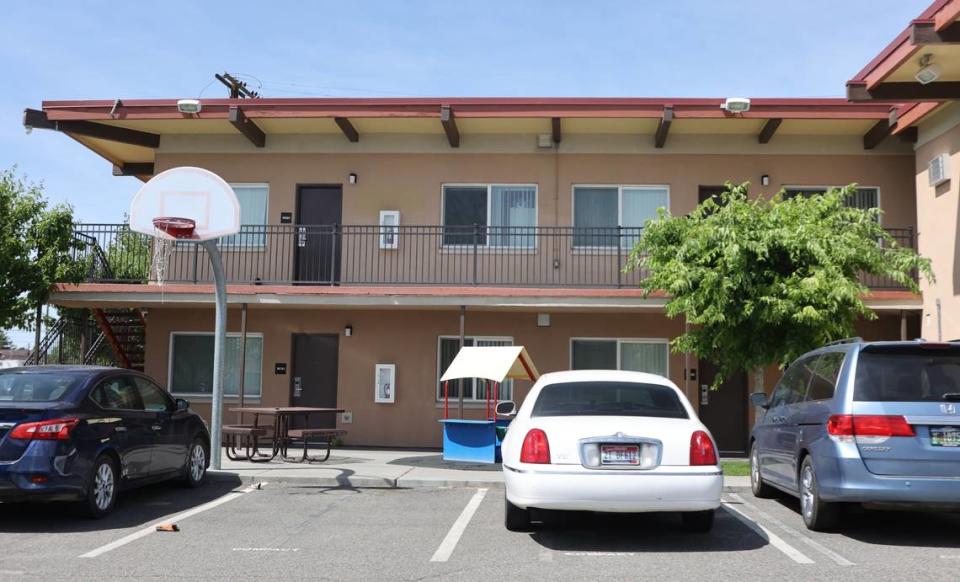
Housing prices
Domestic farmworkers with seasonal employment simply can’t compete for market-based housing rates with their low income levels. They also often only need short-term housing — that doesn’t fit the typical 12-month lease.
“Housing costs have just skyrocketed in the last five to 10 years and far outpace wage increases,” Miller said. “The Tri-Cities are experiencing what a lot of communities in Washington are experiencing. That’s the demand and cost for housing outstripping what’s available and affordable.”
The cost of the apartments in farmworker housing is significantly less expensive than market rates.
The La Posada units, intended for domestic workers, cost $10 per day for an individual to stay in a shared room with up to four people and $20 per day for families. Family unit capacity maxes out at six people.
The rooms include a bed, sheets, refrigerator, table with chairs and a fan or air conditioning. There is a shared kitchen in La Posada East for residents to use.
La Posada manager Ramon Mota said in Spanish that by the end of May, all apartments will be full through November, which is typical each year. Farmworkers can qualify to live at La Posada with a minimum annual income of $3,600, identification and a W-2 form from the last year.
The length of a person’s stay at farmworker housing varies. In April and May, La Posada had tenants for two weeks during the asparagus season. Tenants can stay up to six months at a time. Some La Posada tenants have returned year after year and live there on and off.
Avila said that in his six years at Ringold, he’s seen workers return year after year.
New regulations on hotels and motels
Hotels and motels often rent blocks of rooms to farmers as a housing option for their H-2A workers.
“Recently, the state created more stringent standards on hotels and motels that have historically been used to house farmworkers,” Gastelum said.
Starting for the 2024 season, hotels and motels where H-2A workers live are required to be licensed as temporary farmworker housing.
“By adding these regulations, there were some hotels and motels that weren’t able to invest in the capital infrastructure to meet the regulations required to be licensed,” he said. “Thus, you lose some beds.”
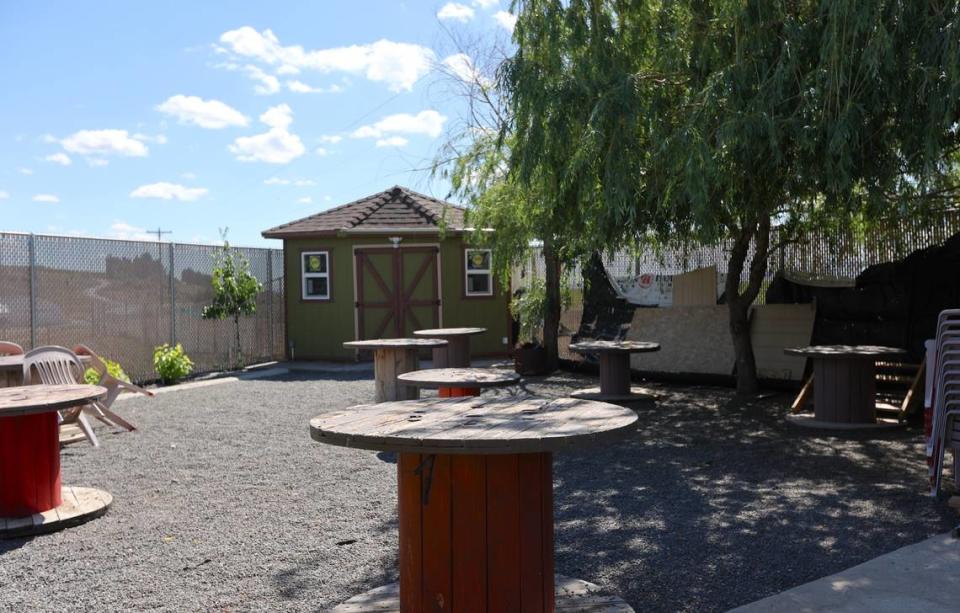
Opportunities for more housing
Cost of labor for farmers is on the rise, especially for labor-intensive crops like asparagus, tree fruit, hops and wine grapes, all staples of the Tri-Cities. Gastelum said that the cost to run farms is pushing 50 to 60% just in labor.
He said that when talking to farmers about their future plans, they are looking at building housing, but it’s a major expenditure.
“For central and eastern Washington, it costs on average $20,000 per bed to build farmworker housing. And it can be north of that,” he said.
The price tag varies based on land ownership and utilities.
Recently, federal USDA grants and loans have been made available nationally for new construction of off-farm housing and on-farm housing. This money — $43 million allocated for off-farm housing and $5 million for on-farm housing — can be used to build H-2A farmworker housing, which Gastelum said is usually not the case with federal funding.
Applications are due July 3. Wafla, ORFH and Sea Mar will not be applying due to the nature of the funds being available only for new construction, a big prospect for the organizations at this time.
Gastelum said that he’s also seen apartment buildings, hotels and houses converted into farmworker housing.
“The problem you have with investing in farmworker housing if you’re not the farmer yourself is that the housing is going to sit vacant for a good portion of the year.”
That dynamic creates caution for private investors. In Kennewick, this very issue left a former motel property in ruin.
‘If we can’t fill needs, we will see farms close’
Gastelum said that he foresees there will be enough farmworkers to do year-round agricultural work in Washington. He worries about labor being available for seasonal work.
“If we can’t fill those needs for short-term labor bursts and we don’t have mechanical ways to do the work, then we will see farms close,” he said.
He explained that many Washington farms are on a one- to two-year survival plan, and there are very few that have certainty going into the next five to ten years.
“If we can’t get affordable housing and if we can’t keep H-2A labor costs in check, both of those pressures are going to make some farmers question if their farms can survive,” Gastelum said.
Kristina Hoeschen is the Senior Vice President of Supportive Services/Chief Compliance Officer at Sea Mar, the community health center that owns La Posada East and West in Pasco. She said when there isn’t enough housing, there are concerns about overcrowding, the health of farmworkers and homelessness.
“Housing is critical to health and stability for these workers who provide so much for our state,” Hoeschen said.
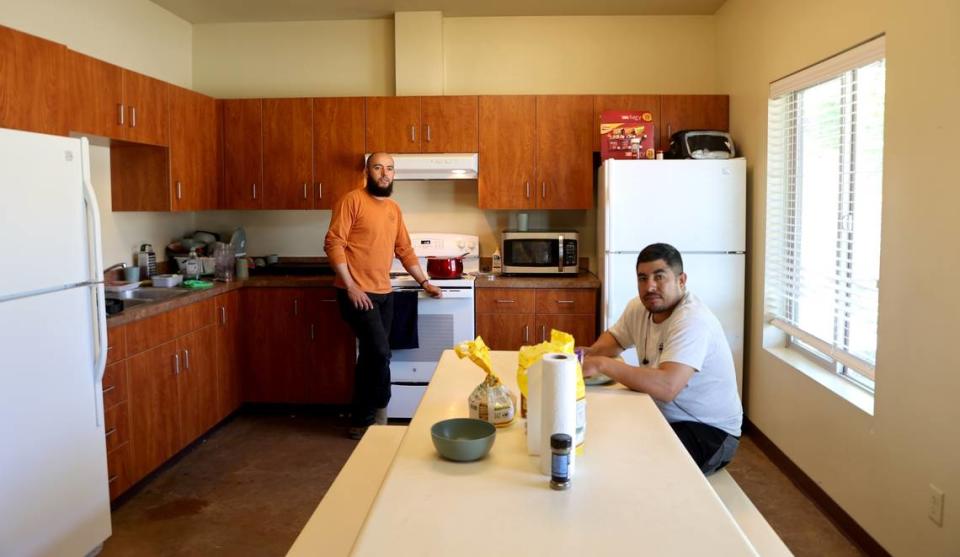
In the afternoon at Ringold, Gonzalez Rios and Sonchez Tapia return to the housing complex by 1 pm, having worked five to six hours in the orchards. They cook a meal in the kitchen that they share with the nine other residents. Outside the back door, a worker talks on the phone with family in Mexico.
Sonchez Tapia said the work is about the same as in Virginia and Georgia where he’s previously worked through the H-2A program, but the housing is more comfortable. “This is better. We like it here,” he said in Spanish.


